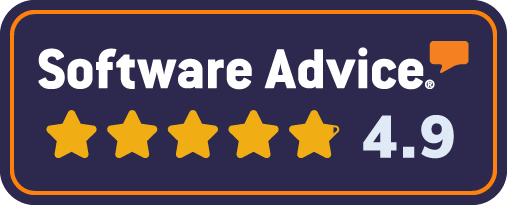OCR Technology

Optical Character Recognition (OCR) technology has become indispensable in modern document management, enabling businesses to transform their paper records into accessible, searchable, and editable digital documents.
OCR’s capabilities go beyond simple text conversion, allowing organizations to digitize vast amounts of data, streamline processes, and improve compliance efforts.
AIDA's OCR platform extends these benefits by incorporating exceptional handwritten text recognition, making it ideal for industries handling diverse document types like healthcare, finance, and legal.
What is OCR Technology?
OCR technology identifies and converts characters from printed and digital images into machine-readable text.
This transformation is powered by algorithms that interpret scanned text, creating editable and searchable documents.
From recognizing complex fonts and varying layouts to managing diverse document types, OCR tools today use artificial intelligence and machine learning to offer far-reaching applications.
Benefits of OCR in Document Management
Using OCR to manage documents offers significant benefits that streamline business workflows and improve information accessibility:
- Enhanced Document Accessibility: OCR enables the conversion of static images into searchable and editable formats, making it easier to locate, share, and edit documents.
- Efficient Data Processing: With OCR, extracting essential data from documents can be done quickly and accurately, reducing manual data entry and boosting productivity.
- Improved Document Organization: OCR allows documents to be indexed and sorted into digital archives, helping employees access specific files or text at the click of a button.
- Secure Compliance Management: Digital records created with OCR are easier to audit, ensuring businesses stay compliant with regulatory standards while improving data governance.
The AIDA Advantage: Enhanced OCR with Handwritten Text Recognition
AIDA’s OCR platform not only excels at recognizing printed text but also offers powerful handwritten text recognition.
This feature sets it apart, making AIDA a valuable tool for organizations that manage handwritten documents, such as legal firms, hospitals, and educational institutions.
AIDA’s ability to accurately convert handwritten notes, forms, and records into searchable digital text allows businesses to digitize even their most complex and varied records, enhancing both accessibility and compliance.
AIDA’s OCR functionality extends to key areas within its document management system, including:
- Automated Data Capture: By extracting relevant fields directly from printed or handwritten documents, AIDA reduces reliance on manual data entry, minimizing errors and speeding up data flow.
- Comprehensive Document Search: With OCR, all documents in the AIDA system are indexed and fully searchable, allowing users to find specific terms, dates, or keywords within both printed and handwritten text.
- Improved Data Accuracy: AIDA’s OCR minimizes errors associated with manual processing, making extracted data more reliable for critical processes.
Key Applications of OCR
The scope of OCR technology is extensive, especially when enhanced by handwritten recognition as in AIDA's system.
Here are some critical applications where OCR enhances document management:
- Healthcare: Medical providers handle handwritten prescriptions, patient forms, and historical records that need to be readily accessible. OCR in AIDA enables healthcare providers to convert handwritten notes into digital text, enhancing record management and patient care.
- Finance: Financial institutions benefit from OCR's ability to convert handwritten loan applications, checks, and invoices into digital records, improving processing speed and maintaining accurate records for audits.
- Legal: Lawyers and legal firms often deal with handwritten notes, client intake forms, and signed contracts. AIDA’s OCR with handwriting recognition can organize and archive these documents, making legal research and document retrieval faster and more efficient.
- Education: Educators and administrators can use OCR to digitize handwritten student records, research papers, and archival materials, creating accessible digital libraries for future reference.
OCR with AIDA’s Knowledge Graph: Unlocking Document Connections
AIDA’s platform goes beyond simple OCR by leveraging extracted text to create inter-document connections using its Knowledge Graph feature.
This advanced feature automatically builds relationships across documents by identifying and linking related content. For example, a signed contract can automatically connect to its corresponding invoices, purchase orders, or communication logs, creating a unified view of all relevant records.
This interconnected, searchable environment further amplifies the power of OCR in AIDA by organizing data for comprehensive document visibility.
OCR Technology: Looking Forward
The evolution of OCR technology promises even greater accuracy and flexibility.
As AI continues to improve OCR's ability to recognize and adapt to various handwriting styles, fonts, and layouts, document processing will become faster, more accurate, and more affordable.
For businesses, this means less reliance on manual entry, greater compliance, and improved operational efficiency.
Why Choose AIDA for OCR and Document Management?
Getting started with AIDA’s OCR-powered platform is easy, thanks to seamless integrations with popular storage solutions like Google Drive, Dropbox, and Microsoft 365.
AIDA’s user-friendly interface enables organizations to quickly digitize their records and optimize document workflows with minimal setup time.
With specialized OCR capabilities, including handwritten text recognition, AIDA offers an unmatched solution for comprehensive document processing needs.






